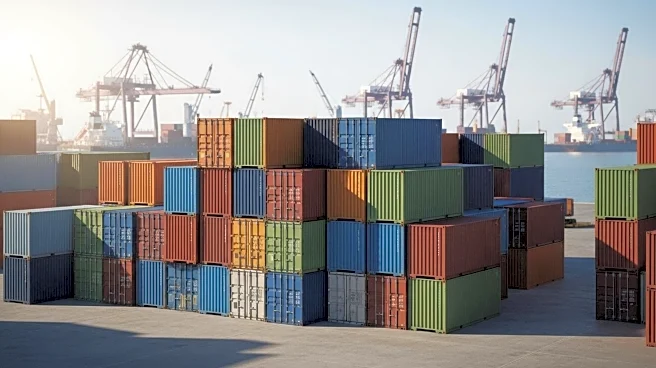What's Happening?
President Trump has enacted new tariffs on imported kitchen cabinets, vanities, lumber, timber, and certain upholstered furniture. These tariffs, effective immediately, include a 10% tariff on softwood lumber and timber imports, with a 25% tariff on kitchen cabinets and vanities, set to rise to 50% by January. The tariffs are part of Trump's broader strategy to protect U.S. manufacturers and address national security concerns. However, industry experts warn that these tariffs could increase housing costs and delay home renovations. The National Association of Homebuilders has expressed concern that the tariffs will exacerbate challenges in the housing market by raising construction and renovation costs.
Why It's Important?
The implementation of these tariffs is significant as it directly affects the housing market and consumer prices. U.S. manufacturers may benefit from reduced competition, but consumers and businesses could face higher costs. Retailers are expected to pass these costs onto consumers, potentially leading to double-digit price increases. This could slow down the housing market, which is already facing challenges. The tariffs also impact international trade relations, particularly with Canada, a major supplier of softwood lumber to the U.S. The move could strain trade relations and lead to further disputes.
What's Next?
If new trade agreements are not reached, tariffs on kitchen cabinets and vanities will increase to 50% by January. Retailers are likely to raise prices, especially as the holiday season approaches, which could affect consumer spending. The housing market may experience further slowdowns due to increased costs. Stakeholders, including industry groups and international trade partners, may seek negotiations to mitigate the impact of these tariffs.
Beyond the Headlines
The tariffs highlight the ongoing debate over protectionism versus free trade. While intended to bolster U.S. manufacturing, they may lead to unintended consequences such as strained international relations and increased consumer costs. The long-term impact on the housing market and trade relations remains uncertain, with potential shifts in global supply chains.











